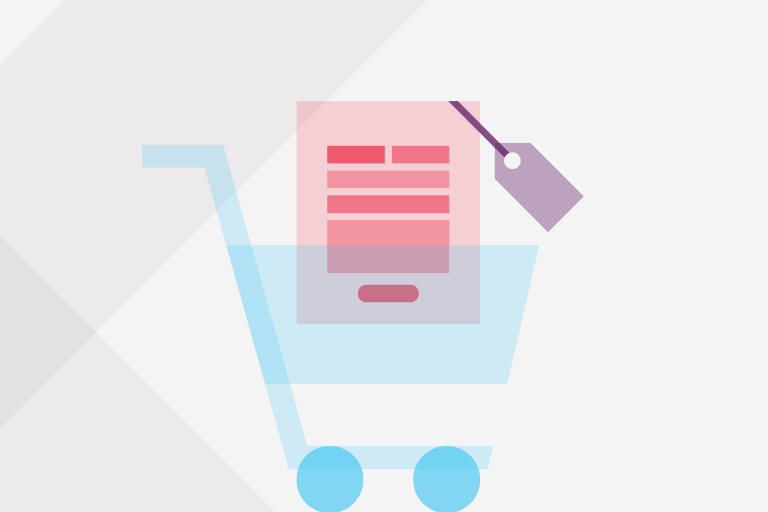In the days following Black Friday and Cyber Monday, your inbox is likely jam-packed with promotional emails from every brand you’ve ever given your email address to. Remember ten years ago when you signed up for whitewater rafting because your ex thought it would be fun? Bam. Today you can get 15% off your next raft adventure. Ah, memories.
But, we digress. Let’s get back into it.
Promotional emails are usually generic, site-wide offers—a “20% Off” here and a “BOGO” there. Given the sheer volume of promotional emails that inundate audiences’ inboxes year-round, how can you stand out and capture the customers’ attention?
While a lot of the time, especially during this time of the year, the promotional offers are applicable to every item on your website, personalization can still play a pivotal role. We’ll explain. But first, we’re going to start at the beginning.
The History of Promotional Emails
We can all thank the “Father of Spam,” Gary Thuerk, for gifting us with promotional emails. In 1978, Thuerk sent the first email blast to 400 customers, advertising a computer. The email generated $13 million in sales (over $78 million today) and a few complaints, but it’s safe to say promotional emails became a roaring success.
Nowadays, however, often referred to as “batch and blast” emails, promotional emails are losing their efficacy. Sending the same email to every customer may seem smart, but it’s a pure quantity play, without considering quality. In fact, batch-and-blast emails only generate an average revenue of $0.04 per email sent. Compare this to the average ROI for email marketing in general—$36 for every dollar spent—and it’s clear that batch-and-blast emails don’t deliver the same oomph.
Why? Customers have become accustomed to personalization in marketing.
Why Does Promotional Email Personalization Matter?
Because promotional emails, especially for Black Friday and Cyber Monday, feature sitewide sales, brands may find it easier to send the exact same message to every customer on their mailing list. However, the message may not resonate the same way with each person.
For example, say you’re a home improvement store and you have a sale on hammers—10% off all hammers—and decide to send a batch and blast promo to all of your customers highlighting the deal. Lisa, a long time customer, just bought a hammer via your website last week. John, on the other hand, has never purchased from you but subscribes to your newsletter. When receiving the promotional email, Lisa may be aggravated since she just recently paid full price for her hammer, while John may be elated and add a hammer to his shopping cart.
While both Lisa and John interact and are familiar with your brand, they have had very different experiences. This is why personalization is vital. Instead of alienating an existing customer to satisfy a new one, brands can create an email marketing campaign that pleases everyone.
The Role of Triggered Emails
With the right marketing automation technology and a fully fleshed out martech stack, brands can send emails (among other marketing communications) based on customers’ past actions. Marketing workflows can be designed such that different experiences result in different messaging. Using refined segmentation, you can be more targeted in your promotions.
Customers who have made a purchase previously, like Lisa, could be sent a promotional email with a coupon for items that pair well with their last purchase. For example, maybe Lisa forgot to purchase nails with her hammer. After her hammer is purchased, an email with a coupon for 10% off nails could be triggered to send automatically.
Customers who have never made a purchase, like John, could be served a site-wide coupon, to promote browsing and a first purchase. Or, maybe John is subscribed to your gardening newsletter but hasn’t made a purchase. When he signs up for your newsletter, your workflow could trigger a promotional email that highlights gardening tools.
While triggered emails are important for automating once-manual processes, there’s more brands can do to further personalize emails.
Dynamic Content
Building marketing workflows to send triggered emails is a good first step to developing segments and personalizing promotional emails, but we can do better. To enhance your triggered emails even more, you can take advantage of dynamic content fields. These fields can pull information from your catalog or customer profiles to adjust for each recipient.
In Lisa’s email, for example, you could include a photo of the hammer she just purchased above the new recommended items, to remind her of her past purchase and show that your brand is providing customized product recommendations.
With John, you could include his name in the subject line and then include a working countdown that shows when the coupon expires. If John revisits the email later, the countdown should still be accurate to the time he revisits.
There are multiple ways to personalize promotional emails for each individual customer. It may sound like a heavy lift for your marketing team, but it doesn’t have to be.
Work Smarter, Not Harder
Personalized promotional emails for each of your customers doesn’t mean crafting hundreds of thousands of emails and sending them out individually. Start by taking the time to segment your customers into specific groups with similar traits, based on zero-party and behavioral data. With this segmentation alone you can set a base level of email personalization.
Once you have your segments you can create niche marketing workflows that guide members of each segment through the marketing funnel. Then, the pièce de résistance is incorporating dynamic content. By utilizing your data feeds to enhance your email templates, you can auto-populate emails with content specific to each user profile. In doing so, you’ll create a highly personalized experience for each individual customer. They’ll feel like they’re the only one on your mailing list.
Impersonal batch and blast is a thing of the past. Create personalized promotional emails to stand out in your customers’ inboxes.
To learn more about Iterable’s email marketing capabilities, schedule a demo today.
































